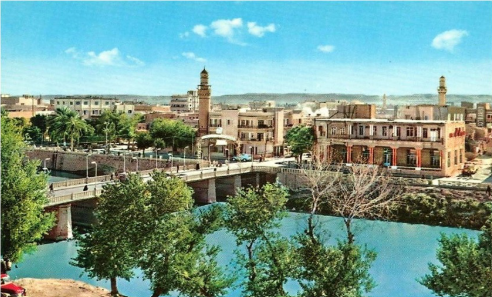Deir ez-Zor Governorate is located in eastern Syria and is considered the second-largest among Syrian governorates by area, at approximately 33,060 square kilometers. It boasts a strategic location on the Euphrates River and is bordered by Iraq to the east, making it an important hub for trade and natural resources in the country.
1. Historical Overview
Deir ez-Zor has a rich history spanning thousands of years, having been a civilizational center in ancient times and influenced by numerous civilizations, including the Assyrian, Chaldean, and Roman. During the Islamic eras, the city developed into a connecting point between the East and West and played a role in the Islamic conquests and trade routes. Deir ez-Zor witnessed important historical phases, including Ottoman rule and the modern period, which contributed to the city's development as an agricultural and commercial center.
2. What is it Known For?
- Agriculture: It heavily relies on the cultivation of wheat, barley, and various vegetables.
- Oil and Gas: The governorate contains significant oil fields that make up a large portion of Syria's oil production, making it a strategic region.
- Livestock: Extensive raising of sheep and goats.
- Euphrates River: Forms an essential lifeline for agriculture and the economy.
3. Key Tourist and Historical Landmarks
- Ancient Deir ez-Zor City: Contains ruins dating back to Roman and Byzantine eras, with important architectural and historical remains.
- Deir ez-Zor Bridge: A historic bridge over the Euphrates River, representing a prominent landmark in the city.
- Archaeological sites at Tell al-Hadher and Tell Brihi, which tell the rich history of the region.
- Local museums displaying archaeological artifacts and cultural heritage.
4. Geography and Climate
Deir ez-Zor is characterized by desert terrain and vast plains, with a desert climate that is hot in summer and cold in winter. Rainfall is scarce and concentrated in the winter. The Euphrates River flows from west to east through the governorate, forming a vital waterway that supports agriculture and economic activity.
5. Culture and Customs
The governorate is distinguished by a significant cultural diversity, with an Arab majority and tribes that preserve their authentic traditions and customs. Popular and religious celebrations are related to agricultural seasons and tribal occasions, with local festivals showcasing folk heritage.
6. Economic Activities
Economic activities are concentrated on agriculture and livestock farming, with great importance placed on the oil and gas sector, which forms the backbone of the local economy. There are also some traditional agricultural industries related to processing agricultural products.
7. Major Cities and Towns
- Deir ez-Zor (Capital)
- Al-Bukamal
- Al-Mayadin
- Hajin
- Al-Sabkha
8. Infrastructure and Services
The governorate has a road network connecting it to neighboring areas, although it has been damaged by previous conflicts. It includes hospitals, schools, and various health facilities, with continuous efforts to rehabilitate the infrastructure.
9. Current Situation and Challenges
Deir ez-Zor faces significant challenges due to the war and conflicts that have affected its economy and services. Oil remains a key resource, but it faces fluctuations in control and development, in addition to the need for reconstruction and improving living conditions.
10. Prominent Figures
- A group of political and military leaders who played a role in the governorate's history.
- Writers and intellectuals who contributed to enriching Syrian culture.

